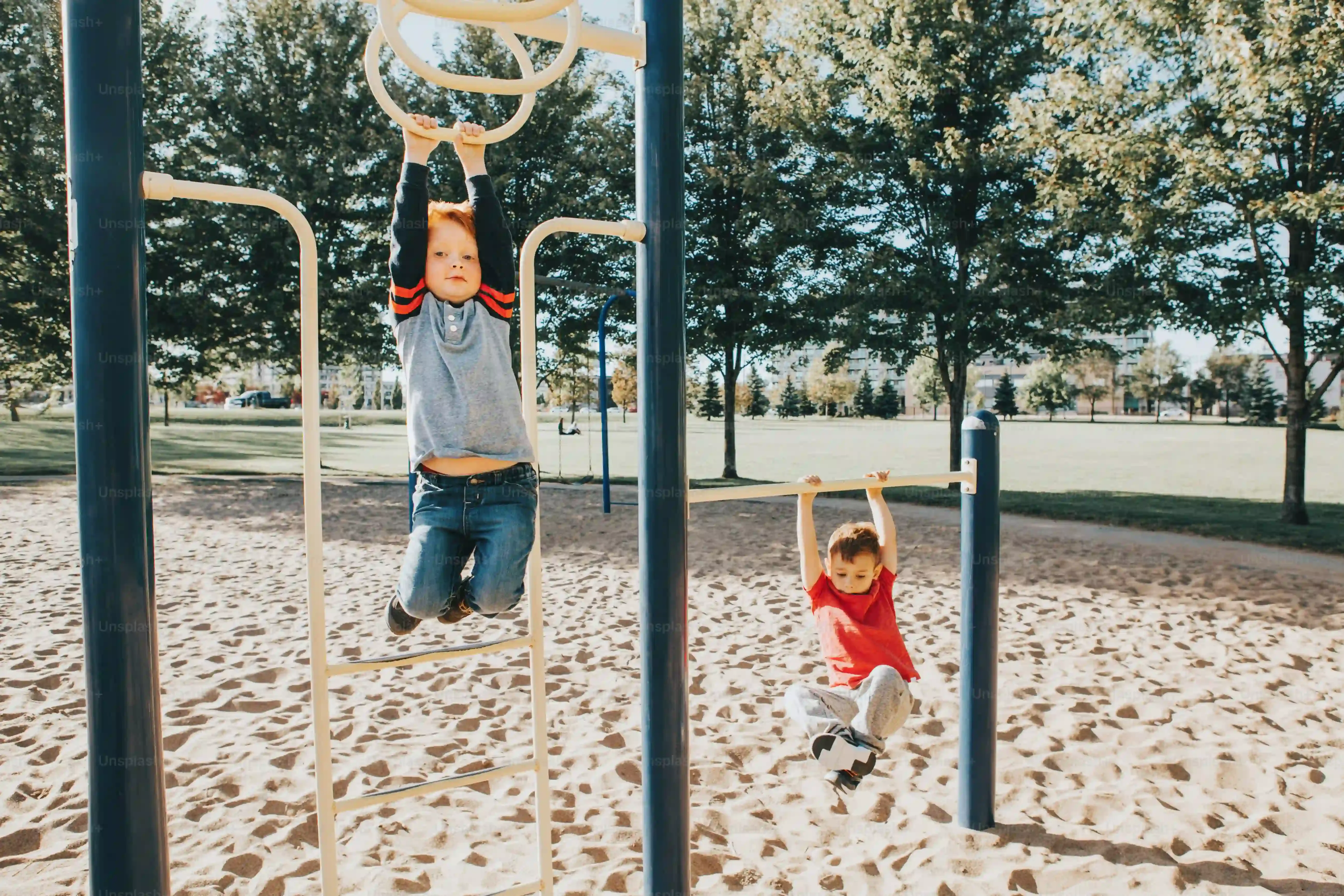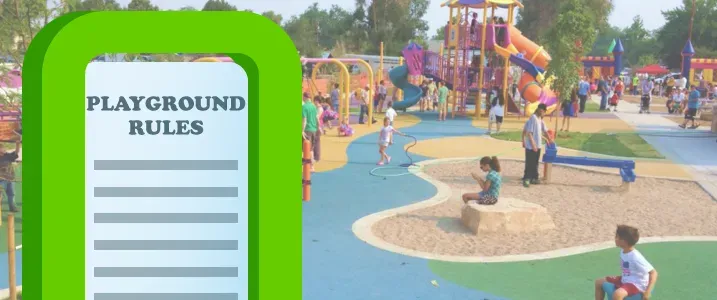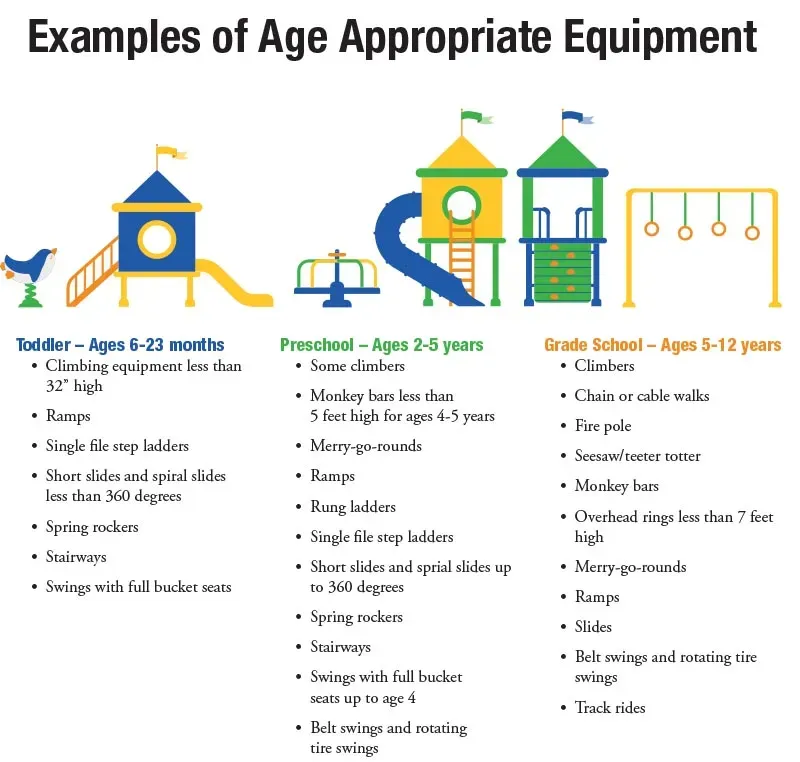Table of Contents
Picture a busy playground. Kids are climbing, swinging, sliding. It looks like pure chaos, but hopefully, it’s controlled chaos. Ever stopped to think about what makes that equipment safe? It’s not just good luck; it's a whole system of rules designed to keep scraped knees from turning into serious injuries. Navigating the world of outdoor play equipment regulations can feel like deciphering ancient texts, especially when you’re responsible for providing a safe space for children.
Understanding Outdoor Play Equipment Regulations: The Basics

Understanding Outdoor Play Equipment Regulations: The Basics
so you're diving into this world of outdoor play equipment regulations, huh? It might sound dry, like reading a phone book from the 80s, but trust me, understanding these rules is absolutely critical. Think of it as the hidden scaffolding that keeps playtime from becoming a trip to the emergency room. At its core, understanding outdoor play equipment regulations is about creating safe environments where kids can just be kids – running, jumping, and generally being chaotic little humans – without unnecessary risk. It’s not about stifling fun; it’s about mitigating hazards, from obvious stuff like sharp edges to less obvious things like inadequate fall surfacing or entrapment points. These aren't just suggestions; they're the technical blueprints for safety, developed over years of research and, unfortunately, learning from past accidents.
The EN1176 Standard: What Playground Safety Rules Mean
So, What Exactly is EN1176?
Alright, let's talk about the heavy hitter in outdoor play equipment regulations: the EN1176 standard. Think of it as the rulebook written by folks who've spent a lot of time thinking about how kids fall off things and how to make that less disastrous. This isn't some dusty old document nobody reads; it's the go-to guideline across Europe, and often referenced elsewhere, for designing, manufacturing, and installing playground equipment. It breaks down the nitty-gritty details, from the minimum thickness of a bolt to the maximum gap between bars where a kid's head could get stuck. It's the technical backbone ensuring that climbing frame you just saw isn't a death trap waiting to happen.
Diving into the Parts of the Standard
EN1176 isn't just one big book; it's a series, each part tackling a specific aspect of outdoor play equipment regulations. There's the main one, EN1176-1, which covers general safety requirements for everything from swings to slides. Then you get into the specifics: EN1176-2 for swings, EN1176-3 for slides, and so on, covering carousels, seesaws, and even spatial networks. There's also a crucial companion standard, EN1177, which deals specifically with impact-absorbing playground surfacing. It tells you how deep that wood chip or rubber matting needs to be based on the potential fall height from the equipment above it. Ignoring these details is like building a house without checking if the foundation is solid.
Here's a quick peek at some key parts:
- EN1176-1: General safety requirements and test methods
- EN1176-2: Additional specific safety requirements and test methods for swings
- EN1176-3: Additional specific safety requirements and test methods for slides
- EN1176-7: Guidance on installation, inspection, maintenance and operation
- EN1177: Impact attenuating playground surfacing - Determination of critical fall height
Compliance Doesn't Guarantee Immunity
Now, here’s where things get interesting, and maybe a little less black and white. While complying with EN1176 is considered the standard of good practice for outdoor play equipment regulations, it's not a legal requirement everywhere, especially outside of Europe. More importantly, simply checking off every box in the standard doesn't automatically make your playground bulletproof in the real world. Kids are creative, unpredictable, and sometimes determined to find the least safe way to use something. The standard provides a baseline, a critical one, but site-specific factors, proper installation, ongoing maintenance, and supervision all play massive roles in actual safety. I once saw a perfectly compliant slide installed directly over concrete because someone didn't read the EN1177 part. That's a fail, standard or no standard.
Navigating Compliance: New vs. Existing Outdoor Play Equipment

Navigating Compliance: New vs. Existing Outdoor Play Equipment
Buying Shiny New Stuff
so you're buying brand new outdoor play equipment. This is where things *should* be straightforward regarding outdoor play equipment regulations. Manufacturers selling into markets that recognize standards like EN1176 are expected to design and build their gear to meet the current version. They’ll provide documentation, often a certificate of conformity, stating their product complies. Your job here is to make sure you get that documentation and that the installation follows their instructions precisely. A perfectly built piece of equipment can become dangerous if installed incorrectly. Don't just assume because it came in a fancy box it's good to go; verify the paperwork and watch the installation crew like a hawk.
Think of it like buying a new car. You assume it meets safety standards, but you still need to drive it properly and get it serviced. With new playground equipment, the manufacturer handles the initial build compliance, but the buyer is responsible for correct installation and ongoing checks. It’s not a set-it-and-forget-it deal. You need to understand the critical fall height for the equipment you bought and ensure the chosen surfacing (per EN1177) is appropriate for that specific height. Skimping here is asking for trouble.
Dealing with the Old Guard
Now, let's talk about the equipment that's been around the block. Maybe it's been there for decades, seen countless kids, and looks sturdy enough. The tricky part is that outdoor play equipment regulations, like EN1176, are generally not retrospective. This means equipment installed before a standard was published or updated isn't legally required to meet the *current* version of that standard. However, this absolutely does not mean you can ignore its safety. You still have a duty of care to provide a safe environment.
Assessing older equipment requires a different approach. Instead of checking for strict compliance with the latest bolt size requirement, you need to assess its overall safety based on current understanding of hazards. Is there head entrapment risk? Are there sharp points or crush points? Is the structure stable? Is the fall surfacing still adequate for the equipment's height? This is where bringing in a qualified playground inspector is non-negotiable. They can assess the equipment against current safety principles, even if it doesn't technically meet a standard that didn't exist when it was installed. They'll tell you if remedial work is needed or if it's time for the old favorite to retire.
Aspect | New Equipment | Existing Equipment |
|---|---|---|
Standard Compliance | Designed/Built to current EN1176 (manufacturer claim) | Not legally required to meet current standards |
Key Responsibility | Proper installation, documentation verification | Hazard assessment based on current safety principles |
Assessment Method | Verify manufacturer docs, check installation | Expert inspection against current safety knowledge |
Action if Issues Found | Correct installation, address manufacturing defects | Remedial work, replacement if necessary |
Legal Implications and Why These Regulations Matter

Legal Implications and Why These Regulations Matter
Ignoring the Rules Comes with Consequences
Let's cut to the chase. While outdoor play equipment regulations like EN1176 might not always be strict law in every single jurisdiction, ignoring them is like juggling chainsaws blindfolded. You have a legal duty of care to anyone using your playground. This means you are responsible for taking reasonable steps to ensure their safety. When an accident happens – and unfortunately, they do – the first thing investigators, lawyers, and potentially judges will look at is whether you met that standard of care. Did you follow the recognized industry guidelines? Were you aware of the outdoor play equipment regulations applicable to your area or recommended by safety bodies? Not having a good answer here puts you on shaky ground.
Think of it this way: if a standard exists and is widely accepted as good practice, failing to meet it makes it very hard to argue you acted "reasonably." It opens the door to negligence claims. Someone gets hurt because a piece of equipment had a known entrapment risk that the standard addresses, and you didn't fix it? That's a problem. A big, expensive, potentially reputation-damaging problem. It’s not just about avoiding fines; it’s about avoiding the courtroom altogether because someone suffered a preventable injury.
Lawsuits Are Expensive. Injuries Are Worse.
Nobody wants to think about lawsuits, but they are a very real consequence of neglecting outdoor play equipment regulations. When a child is seriously injured, families look for answers, and sometimes, that leads to legal action. Settlements and court judgments in playground injury cases can run into the hundreds of thousands, sometimes millions, of dollars. Beyond the financial hit, there's the immeasurable cost of a child's pain and trauma, and the long-term impact on their life and their family's. Adhering to regulations isn't just a bureaucratic exercise; it's a fundamental part of risk management and, frankly, basic human decency when you're providing a space for children.
Insurance might cover some of the financial cost, but premiums will likely skyrocket, and finding coverage in the future could become difficult. Your organization's reputation takes a hit, too. News travels fast, especially bad news about playground safety. People lose trust. Parents become wary of bringing their kids to your facility. It's a domino effect that starts with seemingly small oversights in following established safety protocols, like the critical fall height requirements outlined in EN1177 or the inspection guidance in EN1176-7.
Common Legal Pitfalls:
- Failure to conduct regular inspections
- Ignoring known hazards or deferred maintenance
- Improper installation of equipment
- Inadequate or incorrect fall surfacing
- Lack of clear signage regarding age appropriateness or rules
Regulations as a Shield, Not a Suit of Armor
Following outdoor play equipment regulations provides a strong defense if something does go wrong. It demonstrates that you took proactive steps to ensure safety based on recognized expertise. It shows due diligence. However, and this is crucial, compliance isn't a magic shield that makes you immune to all claims. Accidents can still happen even on the safest, most compliant playground. Equipment can break unexpectedly, or kids might use it in unforeseen ways. The regulations provide a baseline, a starting point for safety.
Your ongoing vigilance is key. Regular, documented inspections (as recommended by EN1176-7), prompt repairs, and ensuring your surfacing remains in good condition are just as vital as the initial compliance. Think of the regulations as the minimum standard. Striving for a culture of safety that goes beyond simply checking the boxes is what truly protects the kids and, by extension, protects you from the worst legal fallout. It's about embedding safety into the operation of the playground, not just the initial build.
Maintaining Safety: Going Beyond the Outdoor Play Equipment Regulations

Maintaining Safety: Going Beyond the Outdoor Play Equipment Regulations
Inspecting Like a Pro (Because Kids Deserve It)
so you've got your equipment installed, maybe it meets the latest outdoor play equipment regulations, or you've assessed your older stuff. Great. But that's just the starting line, not the finish line. Playgrounds get hammered. Sun, rain, frost, and hundreds of tiny, determined feet take a toll. Ignoring routine checks after the initial setup is like buying a car and never changing the oil. It might run for a bit, but failure is inevitable, and likely messy. You need a structured inspection plan.
This isn't just a quick glance while you're walking by. We're talking about documented inspections – operational checks (looking for obvious stuff daily or weekly, like broken swings or trip hazards), and routine inspections (more detailed checks monthly or quarterly, looking at wear and tear, lubrication points, etc.). Then there are the annual main inspections by a qualified third party. These guys are like playground detectives, finding issues you'd never spot. They know the nuances of outdoor play equipment regulations and how wear affects compliance and safety. Skipping these is a gamble you just shouldn't take.
Surfacing Matters More Than You Think
Remember we talked about EN1177, the standard for impact-absorbing surfacing? This isn't just a suggestion; it's critical. The best-designed climbing frame is useless if the ground below doesn't cushion a fall adequately. Over time, loose-fill surfacing like wood chips or sand compacts, displaces, or gets contaminated with debris. Rubber tiles can harden, crack, or peel up at the edges, creating trip hazards. The critical fall height rating of your surfacing is only valid if it's properly maintained at the correct depth and condition.
Checking and maintaining the surfacing is an ongoing chore. You need to regularly rake and top up loose-fill materials, check the integrity of unitary surfaces like rubber mats, and clear away anything that doesn't belong there – broken glass, litter, animal waste. A fall onto compacted sand from a height rated for loose, deep sand can have severe consequences. It's a critical part of maintaining safety that goes hand-in-hand with the outdoor play equipment regulations themselves.
Key Maintenance Must-Dos:
- Perform regular visual checks (daily/weekly).
- Conduct detailed operational inspections (monthly/quarterly).
- Schedule annual independent safety audits.
- Check and maintain fall surfacing depth and condition.
- Tighten loose bolts and connections.
- Repair or replace damaged components promptly.
- Remove debris and hazards from the play area.
Wrapping Up: Safety in Play
So, we’ve walked through the landscape of outdoor play equipment regulations, touching on the EN1176 standard and why paying attention to these details isn't just red tape – it’s fundamental to keeping kids safe. It's clear that simply having equipment isn't enough; it needs to meet specific criteria, be properly installed, and regularly checked. While standards evolve and require ongoing vigilance, the goal remains constant: creating environments where children can explore and challenge themselves without unnecessary risk. Staying informed and proactive with inspections and maintenance is the real key to a safe playground, ensuring those shrieks are from joy, not trouble.